












10
16
Wide-Format Printers
Dealers say it’s a niche worth pursuing by Brent Hoskins
Office Technology Magazine

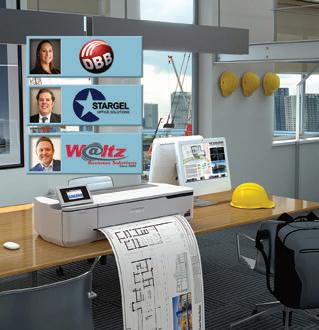

Have you considered offering wideformat printers as another means to differentiate your dealership from the competition?
This month’s cover story includes profiles of three BTA member dealerships that highlight their experience with selling this niche product.
Sell Solutions, Not Servers
A look at the power of Microsoft Azure by Dale Stein Technology Assurance Group (TAG)
Three actions dealers should take to mitigate risks by Greg Goldberg
BTA General Counsel

This month’s Legal Perspective takes a look at an ominous and increasing threat: data breaches. Generally speaking, a data breach consists of any security incident where an unauthorized party gains access to sensitive, confidential or proprietary information.
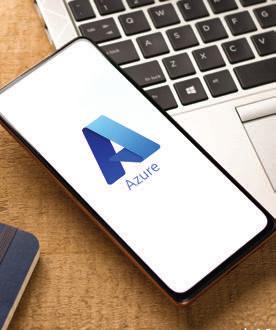

If you are still relying on server sales to help keep your business running, you are now at significant risk of being outcompeted. Why? Because you are in direct competition with Microsoft. Azure technology is the future and it is time for office technology dealers to embrace it.
Search Engine Optimization Drive more website traffic with this expert strategy by Jenna
Miller
Emerald Strategic Marketing
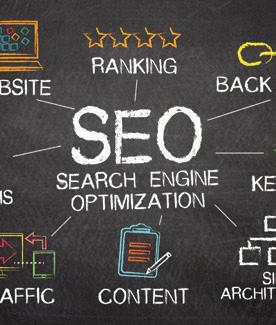
It is three simple letters, but far from simple to execute: SEO, or search engine optimization. You have probably been told that you should have a strong SEO strategy. The right strategy can increase eyes on your products and services, and increase conversions of prospects to customers.
23
The Trifecta of AI Dealers: Start here or get left behind by West McDonald GoWest.ai
Dealers share thoughts on in-office, remote & hybrid Compiled by Brent Hoskins
Office Technology Magazine


This feature includes a question submitted by a dealer member as part of BTA’s Dealers Helping Dealers resource and many of the answers received. These answers and others — as well as additional Q&As — can be found in the members-only section of the BTA website.
Northeast Georgia dealership celebrates 50 years by Elizabeth Marvel Office Technology Magazine

BTA member dealership Duplicating Products recently celebrated a milestone in its history — 50 years in the business. Founded in 1974, the company has evolved its product and services offerings over the years with a document-centric focus.
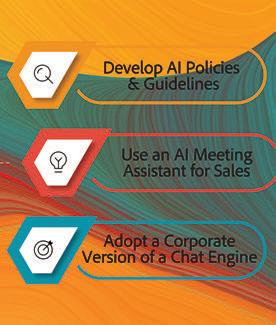

Just like you wouldn’t run an MPS program without data collection or send out lease agreements without solid financing, AI needs to be a core part of your business toolkit. Let’s talk about the “AI trifecta” that will make sure you are set up for a successful and safe start.

The New WorkForce® Enterprise AM Series.
Powered by PrecisionCore®, this marvel has less imaging parts than typical laser printers which can result in fewer slowdowns, breakdowns, and office meltdowns.
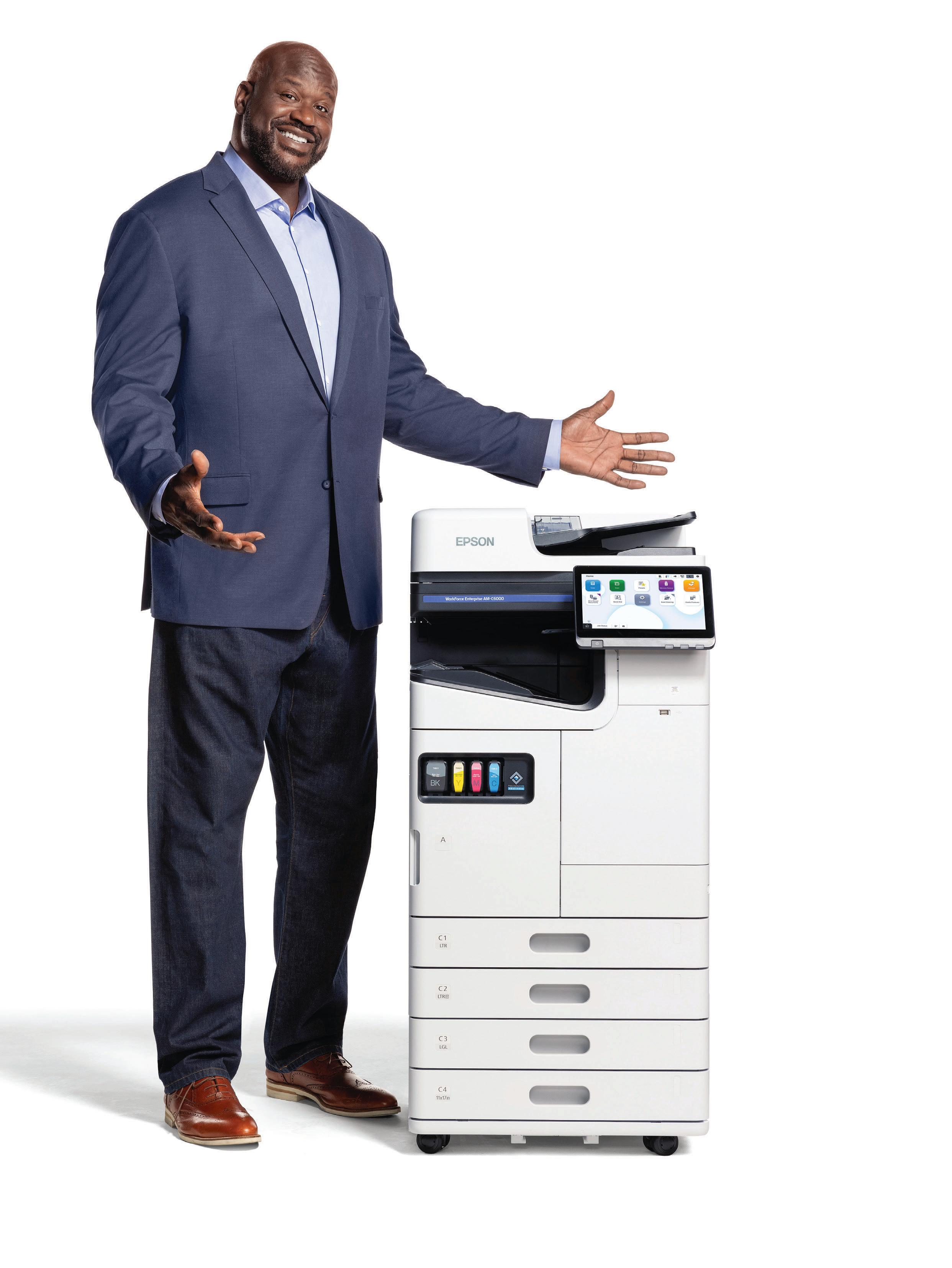



TExecutive Director/BTA Editor/Office Technology
Brent Hoskins brent@bta.org (816) 303-4040
Associate Editor
Elizabeth Marvel elizabeth@bta.org (816) 303-4060
Contributing Writers
Greg Goldberg, BTA General Counsel Business Technology Association

rouble is brewing for off-lease MFPs and single-function printers. There is a growing challenge that, if not properly addressed, could result in the MFP and printer remarketing industry no longer being sustainable, perhaps within the next five to seven years. That could result in leasing companies and dealers scrambling with having to find new ways to manage the disposal of MFPs and printers once leases end.
The challenge was addressed on Sept. 23 at the Lease Equipment Return Summit in San Antonio, Texas, hosted by the Business Technology Association (BTA). I attended the summit, along with Former BTA General Counsel Bob Goldberg and BTA President Adam Gregory. Also present were nine representatives of five leading office equipment leasing companies, as well as a representative of an MFP remarketer attending with the hope, he said, that the information he shared conveys the thoughts of other remarketers.
The problem is multifaceted, but largely has to do with the significant rise of A4 MFPs in the workplace and the resulting everincreasing quantity of A4s coming off lease. Adam illustrated this reality by pointing out that at his dealership, Advanced Business Solutions in St. Augustine, Florida, 70% of placements are now A4. The remarketer noted that, extrapolating from market research firm IDC’s new install projections, within six years there will be 1 million A3 MFPs, A4s MFPs and printers coming off lease annually, the majority of them A4s and printers.
What’s the issue? The asset values of off-lease A3 and A4 MFPs are in decline, but especially for A4 MFPs and printers. “There is very little demand for [off-lease] A4s and printers in the domestic market,”
the remarketer said. “It’s not much better overseas. The margins are low.” As a result, he added, the quantity of off-lease A4 MFPs and printers that must be recycled for materials is increasing. “In the past, about 5% of the A4 MFPs and printers coming into our facility were being sent to recyclers,” the remarketer stated. “Today it is 25%. The projection is that it will be 50% in three years and up to 60% to 65% in seven years.”
Meanwhile, the remarketer said, the cost of warehousing and labor is increasing. So, the remarketers are incurring increasing costs for the handling of equipment coming off lease, shipped to the remarketer and, in turn, sent to recyclers. In addition, there is an expectation that all recyclers will begin charging a recycling fee.
There are also concerns associated with shipments outside the country. The remarketer noted that at his company, 70% of the non-recycled MFPs are currently being shipped overseas. “Our biggest fear is that we will wake up one day and a few big international markets will have quit doing business with our industry due to geopolitical reasons or whatever,” the remarketer said. He also mentioned the challenges that would result from a possible ports strike [now underway].
What is the solution? The summit attendees discussed at least two possible answers: (1) Encourage the OEMs to take more responsibility for the end of life of the MFPs that have no value, perhaps by way of using materials that are of more value to recyclers; (2) Leasing companies may find it necessary to charge an additional fee (the amount determined by each company) on leases in order to pay remarketers a fixed fee (rather than just a commission on the sale value) to cover the costs associated with recycling, and ever-increasing warehousing and labor costs. n Brent Hoskins
West McDonald, GoWest.ai www.gowest.ai
Jenna Miller, Emerald Strategic Marketing www.emeraldstrategicmarketing.com
Dale Stein, Technology Assurance Group (TAG) www.tagnational.com

Business Technology Association 12411 Wornall Road Kansas City, MO 64145 (816) 941-3100 www.bta.org
Member Services: (800) 505-2821
BTA Legal Hotline: (847) 922-0945
Valerie Briseno Marketing Director valerie@bta.org
Brian Smith Membership Sales Representative brian@bta.org
Brooke Barker Administrative Assistant brooke@bta.org
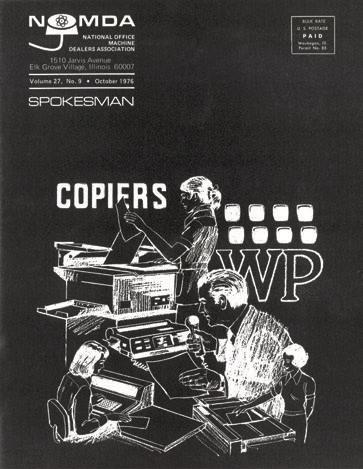
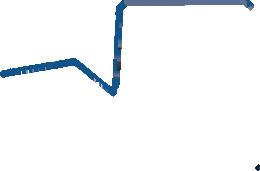
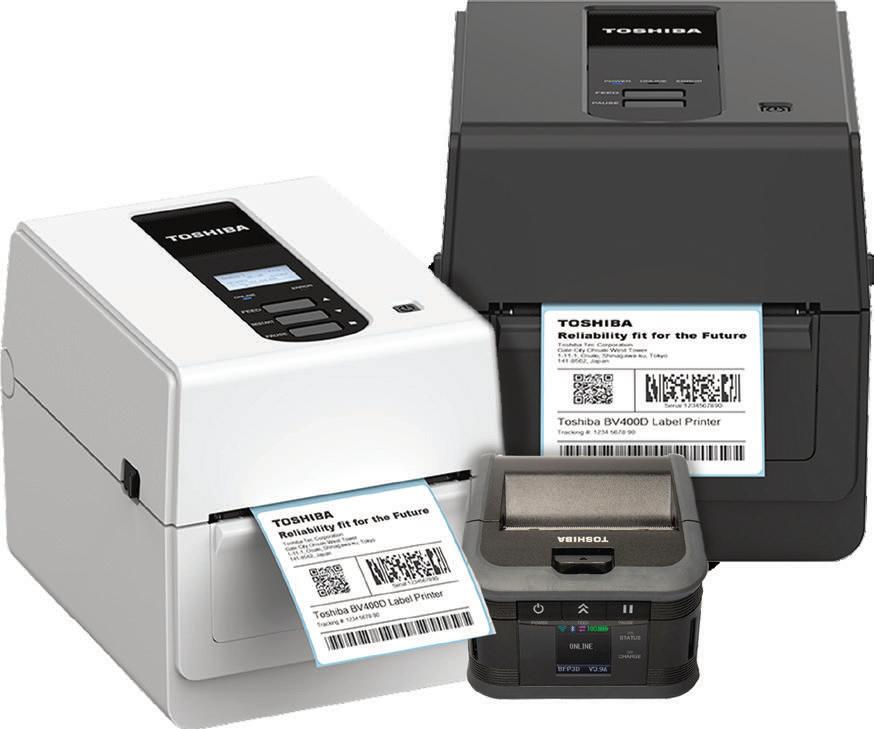


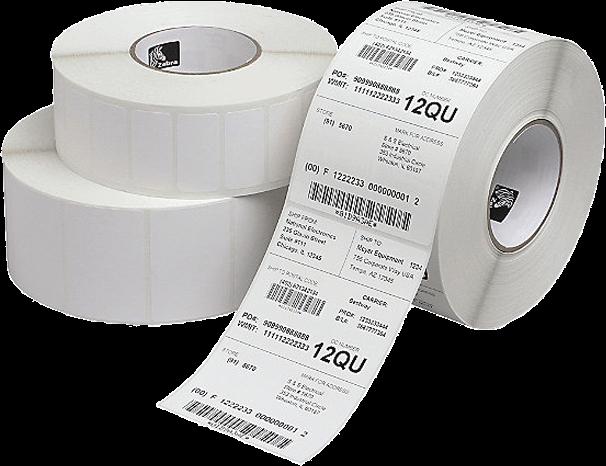

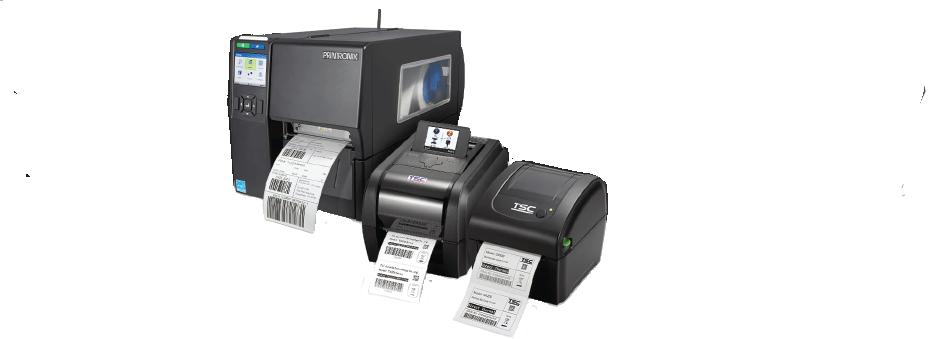


L2024-2025 Board of Directors
President
Adam Gregory Advanced Business Solutions LLC St. Augustine, Florida adam@goabsinc.com
President-Elect
Debra Dennis CopyPro Inc. Greenville, North Carolina ddennis@copypro.net
Vice President
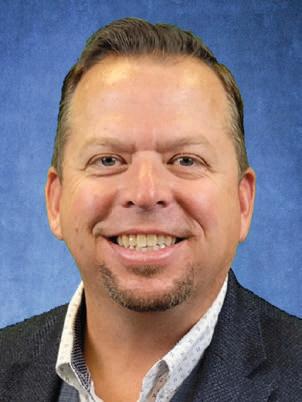
ast month in this column I thanked the 2023-24 fiscal year contributors to the BTA Scholarship Foundation for their futureforward donations to deserving students. This month, I’d like to up the ante on my gratitude. Thanks to a suggestion from Bob Goldberg, BTA’s former general counsel, the Patriot Pack — a group of motorcycle-riding industry veterans — made the BTA Scholarship Foundation its charitable cause for this year’s Patriot Pack Ride, which was held Sept. 9-13.
I recently received the news that the Patriot Pack exceeded its goal of raising more than $100,000 during the Ride. These donations will be used to create the Patriot Pack Scholarship Fund, which will award BTA scholarships to office technology industry U.S. military veterans, their children and grandchildren, starting with the 2025-26 school year.
The Ride, which began at Mars International in Clifton, New Jersey, hit several stops on its East Coast journey to the Navy Seal Museum in Fort Pierce, Florida. Stops included: Konica Minolta Business Solutions U.S.A. Inc., Sharp Electronics Corp., DLL Financial Services, Cobb Technologies, Virginia Business Systems, The Patriot Pond, Systel Business Equipment, ABR Digital Office Solutions, First Citizens Bank, Hytec, Milner and DEX Imaging. I followed the Ride online throughout its journey this year. To see some great photos and videos of the trip, search for the hashtag #patriotpack on LinkedIn.
In an email recapping this year’s Ride, Mike Stramaglio, president and CEO of Stramaglio Consulting, and a founding member of the Pack, wrote: “As I write this
email, I do not have official numbers, but by my calculations, we have exceeded our goal in dramatic fashion, proving again that our industry is arguably the most generous industry in the world! Absolutely incredible! Everyone was remarkably generous this year, but the personal donation from the Doyle Family Foundation [run by Dan Doyle of DEX Imaging] was incredibly offthe-charts generous! I never imagined we would be receiving a $35,000 check and yet, it happened, making every dangerous mile worth it because now we really can make a huge difference for our veterans.”
It gives me great joy to know we will be supporting our industry veterans — and their children and grandchildren — by helping them continue their education. I’d like to thank the generous contributors to the Patriot Pack Scholarship Fund so far: Janene Aul, Adrienne Bastinelli, Alex Richard Bastinelli, Cobb Technologies/ Toni Gorveatt, DLL, Doyle Family Foundation/Dan Doyle, GreatAmerica, IBPI/Mark Grice, Konica Minolta, Yasmin Lopez, Nicholas Mattiello, Milner, Louise Sacks, Debbie Scherer, Kathi Scherer, Sharp, Tom Thomasian, Virginia Business Systems and Tom Walsh.
If you’d like to contribute to the Patriot Pack Scholarship Fund, please visit www. bta.org/PatriotPackScholarships. You can also get more details about the scholarships on that page. For those looking to apply, the application will be available in December.
Since the 1984-85 school year, the BTA Scholarship Foundation has awarded more than $1.8 million to 1,587 deserving students. Will you — or one of your family members — be a future recipient? Even if you are not a veteran, I encourage you to check out BTA’s scholarship program. Learn more at www.bta.org/Scholarships. n Adam Gregory
Mike Boyle BASE Technologies Inc. Bethel, Connecticut mboyle@baseinc.com
Immediate Past President
Don Risser DCS Technologies Corp. Franklin, Ohio don.risser@dcs-tech.com
BTA East Joe Dellaposta Doing Better Business Hagerstown, Maryland jvd@doingbetterbusiness.com
Chip Denlinger DCS Technologies Corp. Franklin, Ohio chip.denlinger@dcs-tech.com
BTA Mid-America
Greg Quirk JQ Office Equipment Omaha, Nebraska gquirk@jqoffice.com
Brett Blake Corporate Business Systems LLC Madison, Wisconsin bblake@corpbussystems.com
BTA Southeast Mike Hicks
Electronic Business Machines Inc. Lexington, Kentucky mhicks@ebmky.com
Blake Renegar Kelly Office Solutions Winston-Salem, North Carolina tbrenegar@kellyofficesolutions.com
BTA West
Kevin Marshall Copy Link Inc. Chula Vista, California kevin@copylink.net
Scott Reynolds Imagine Technology Group LLC Chandler, Arizona sreynolds@itgarizona.com
Ex-Officio/General Counsel
Greg Goldberg
Barta | Goldberg West Hollywood, California ggoldberg@bartagoldberg.com

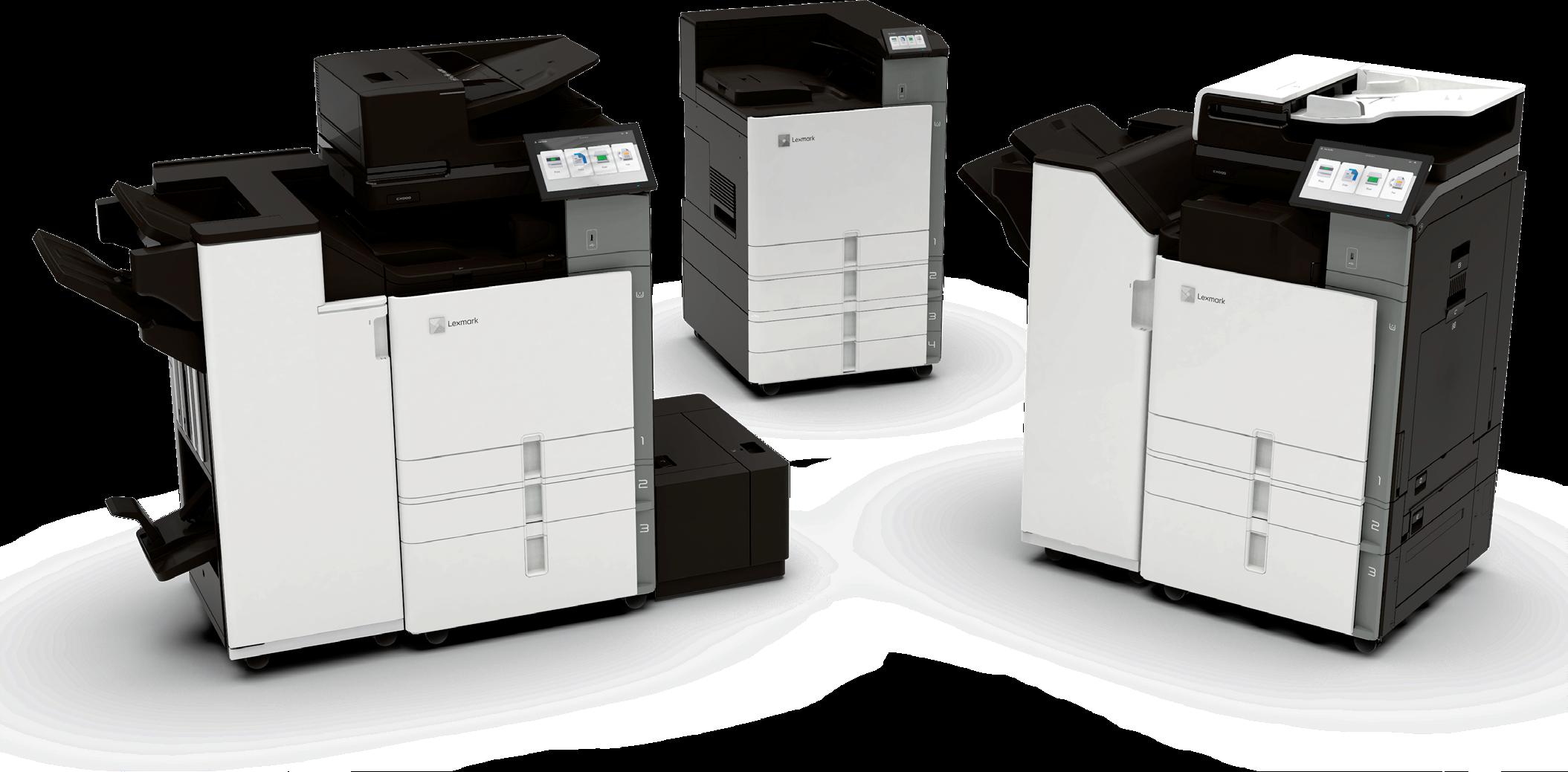
With the new Lexmark 9-Series A3 printer and multifunction products (MFPs) and 8-Series color A4 MFP, you get reassuring versatility, exceptional sustainability, and surprising simplicity from such sophisticated technology.
For more information, visit www.lexmark.com/9-Series
by: Brent Hoskins, Office Technology Magazine
Have you considered offering wide-format printers as another means to differentiate your dealership from the competition? Is it time to take another look? The following profiles of three BTA member dealerships highlight their experience with selling this niche product. Perhaps the comments they share will provide some welcome guidance.
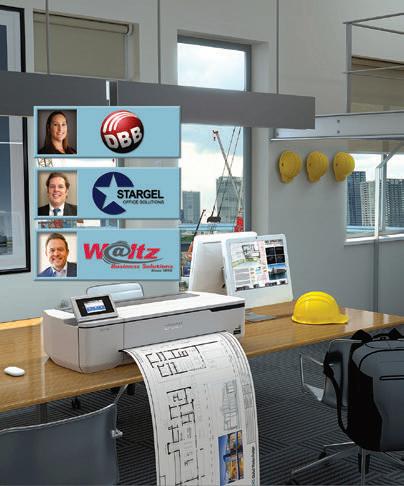
Established in 1973, what was once Word Processing Services is now contemporarily named Doing Better Business Inc. (DBB), an Altoona, Pennsylvania-based dealership with nine locations across three states — Pennsylvania, Ohio and Maryland. Along the way, the company has grown, in part, through acquisitions. In fact, that has been a driving catalyst for the dealership’s new emphasis on its wide-format business.
“We picked up KIP about a year-and-a-half ago when we bought a wide-format company; that’s all they sold,” says Brandi Noye, director of business development at DBB. “That’s part of the reason we started focusing more on this product category, because we now have a lot more wideformat devices in the field. So, we have positioned ourselves to better sell the products and upgrade customers to newer models; we don’t want to lose the MIF that we acquired.”
KIP is only one contributor to DBB’s wide-format lineup. The dealership sells Canon (also resulting from an acquisition) and Ricoh wide-format products, too. “In the past, if we ‘bumped into’ someone who needed wide format, we could sell it,” Noye says, recalling the days when DBB had no proactive focus on the product category. “Today, there is a goal for each of our 20 sales reps to sell at least one wide-format product per year. This year we are on track to double the number of units placed last year. Next year we will continue to increase the number. It is definitely an area of focus for us.”
Given that Ricoh only offers two models, Noye says DBB primarily places Canon inkjet wide format, followed by tonerbased KIP products. She praises both companies for the level
of support they provide. “Canon has the most versatile lineup, from small to larger devices, and their support has been top-notch,” she says. “When you reach out with a question, they get back to you within an hour. We just had a very good planning session with them to focus on the growth of our wide-format business and how we can utilize them more in a supportive way.
“KIP’s level of support is great, too,” Noye continues. “The difference is, because their machines are more expensive and fit best in larger companies with high volumes, we don’t see a ton of those opportunities. It’s a more specific market. But, because wide format is all KIP does, their support is very helpful.”
Despite Canon’s strengths in wide-format graphics environments with inkjet printing, such customers are less common for DBB than in the other prevalent wide-format sector — AEC (architecture, engineering and construction). “If you want any type of graphics, you definitely want a Canon product,” Noye says. “They have anywhere from five inks to 11 inks for some of their higher-end graphics printers. However, selling to graphics people can be tricky because they are very particular; it’s just a different sales tactic. So, the majority of our placements are in AEC environments. In fact, I would say about 90% are in the AEC sector.”
As noted, all of DBB’s reps sell wide format. “One of the things that has helped us tremendously is having our sales reps feel comfortable talking about the product, because they are not speaking to an office manager, but rather to an engineer, architect, etc.,” Noye says. “I think this is where a lot of dealerships fall short; their reps don’t feel comfortable. So, you need to educate them and work with them so they do feel comfortable. I think that has added to our success.”
While DBB offers a broad range of wide-format products, “our average sale is around the $10,000 to $12,000 mark,” Noye says. “The only low-volume models are around $3,500; we don’t typically go lower than that. With KIP, the revenue is greater per device. The last one I sold was around $40,000. Toner-based models are always more expensive. However,
With access to over 1200 test beds, we ensure that each repaired part undergoes a rigorous inspection and live-testing procedure before it leaves our facility for shipment.
Designed to guarantee every component we send to our customers is fully functional upon arrival. Meeting and exceeding expectations for reliability and performance.
Certified live-testing in respective machines, including network testing for quality assurance.
Genuine OEM part replacement including modifications, upgrades, and Hytec’s preventative maintenance on high-failure components included in every repair.
Quality control inspection evaluates technician workmanship, reviews documentation in our Quality Management System to ensure you can rely on the quality of a Hytec repaired part.
KIPs are designed to handle high volumes — 10,000 square feet per month. As with the pricing of MFPs as you move up the speed range, KIPs are more robust and handle more volumes.”
“I think this is where a lot of dealerships fall short; their reps don’t feel comfortable. So, you need to educate them and work with them so they do feel comfortable. I think that has added to our success.“
At Stargel Office Solutions (SOS), based in Houston, Texas, second-generation leadership is solidly in place — brothers Slade Stargel and Tyson Stargel serve as co-presidents. Their father, CEO Jack Stargel, established the dealership in 1987, initially selling typewriters, adding machines and analog copiers. Certainly, the dealership has evolved through the years.
Today, SOS has a comprehensive product and services portfolio, offering not only MFPs and single-function printers, but also managed IT services, managed print services, production print, document management software and digital signage. The dealership’s main MFP line is Toshiba. For single-function printers, it’s HP. The dealership also offers wide-format printers from HP, KIP and Océ/Canon.
“The models we offer range from the smaller desktops providing 24-inch-wide printing to floor-standing models with 64-inch-wide printing; so, we can do anything in between,” says Slade, regarding the wide-format lineup at SOS. “The MSRPs are anywhere from $4,000 up to about $70,000. We offer both inkjet [HP and Océ/Canon] and laser [KIP].”
At SOS, while the wide-format printers are sold by all reps, there is a specialist (who also sells other products for the dealership) available to guide and assist his fellow reps. “He’s been in that role for the 10 to 15 years that we’ve been selling the products,” Slade says. “He started out as an Océ wide-format specialist and has morphed into an HP and KIP wide-format specialist as well. He prepares the quotes and the pricing for the reps and will attend any customer meeting where a rep needs help.”
While SOS does offer wide-format products suited for graphic arts environments, “we predominantly sell to architectural, engineering and construction [AEC] companies,” Slade says. He cites, however, one area of opportunity for placements that was unexpected. “Houston has a large theater district, where we have sold a lot of units one or two at a time,” he says, noting that, in some cases, they are used to print stage props. Such placements have also opened doors to additional product opportunities. “We sold one of these theaters just one wide-format printer,” he says. “That eventually led to the replacement of all of their MFPs and an MPS
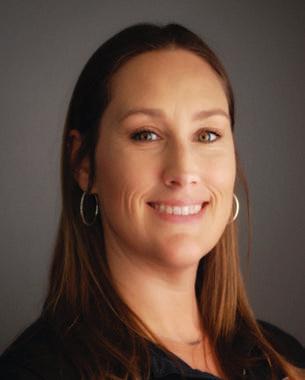
Brandi Noye Doing Better Business
agreement. We ended up with six times the revenue of just that one wide-format printer.”
Slade emphasizes that the word is “sold” when it comes to wide-format printers. “For whatever reason, customers normally purchase their wide-format printers and lease their MFPs,” he says. “Probably 90% of the time they purchase the products.”
With that interesting nugget in mind, what other insight does Slade offer his fellow dealers only now pursuing the wideformat printing opportunity? “With the HP inkjet models, if the customer doesn’t use the ink regularly, the ink tubes dry up, resulting in the need for new printheads and ink,” he says. “That is very expensive. You have to do what we call a ‘run-up test print’ every two to three days to keep that ink from drying up in the tube [anytime the printer is being used infrequently].”
Slade offers some additional insight. Many of the maintenance agreements for wide-format printers sold by SOS are for parts and labor only, with the customer buying its own toner or ink and supplies, he says. “I would advise dealers just starting out to do the same, letting the customer buy the supplies and consumables as needed. That’s how you’re going to get into the least amount of trouble.”
Tyson points out that the margins are good on wide-format printers. “Because not everyone is going to have a need for wide-format printing, it’s a niche market,” he says. “So, you can charge more. Generally, on the wide formats, we do see better margins than we do on MFPs and MPS contracts.” Adds Slade: “And there is a low amount of service calls typically. They run pretty well if the end user is trained and knows what they are doing.”
Not many dealers can say this. “We’ve been in the office technology business for more than 130 years,” says Brandon Meek, CEO of Waltz Business Solutions, based in Crestview Hills, Kentucky. “From 1892, when the company was established by Frank Waltz, to today, we have offered some type of office solution. At first it was typewriter sales and service.”
Fast forward to 2024. “Waltz’s products and services offerings encompass the entire document life cycle, from printing images all the way to document destruction,” Meek says. “We offer a full suite of shredding/scanning services, document management software, AI-based security systems and cameras, mailing solutions and MFPs. Our main imaging line is Kyocera, but we also carry Xerox for production.”






Several years ago, Waltz added Epson inkjet wideformat printers to its lineup. “Our clients were requesting color wide-format units in a certain price range,” Meek says. “We found that Epson could provide the color quality and the wide-format functionality at a price point that was right in line with our customer base. That’s when we made the decision to make Epson our main line for wide format [previously, the dealership had solely concentrated on KIP products].”
“We sold one of these theaters just one wide-format printer. That eventually led to the replacement of all of their MFPs and an MPS agreement. We ended up with six times the revenue ... ”

Slade Stargel Stargel Office Solutions
In the past 12 months, “we’ve had some pretty significant growth” in Epson wide-format printer placements, Meek says. “Previously, we placed maybe one wide-format printer a quarter. Today, collectively, our sales reps are averaging one or two placements each month.”
At Waltz, all sales reps sell the Epson devices with assistance, as needed, from a product specialist, most often in the non-graphics AEC sector, but also on the graphics side to churches and schools, Meek says, emphasizing that the color quality has been well received. “One company saw us print their drone footage of job sites in our showroom and purchased the machine on the spot based on the high-quality color,” he says, noting that Waltz often displaces competitive products. “We have had great success replacing HP machines once the customer sees the Epson’s increased quality, additional color options and faster print speed.”
Regarding the wide-format-printer norm of products being purchased rather than leased, Waltz is working to address that, Meek says. “I think it comes down to a sales


“If you are on the fence with wide format, you should dive in from a competitive perspective. You want to be able to service your clients on all fronts.”

methodology on how you are positioning your company,” he says. “In the past, more of these products were purchased. However, we are now seeing more and more of them being leased. You just need to train the sales team how to educate the client regarding the benefits of leasing.”
Increasingly, Waltz is bundling wide-format printers into a single lease with other products, Meek says. “Maybe some of our competitors are leasing their copiers and printers, but then having the client spend $12,000 to purchase a wide-format printer,” he says. “At Waltz, we are pitching from day one to bundle that Epson into a lease. So, when we upgrade the Kyocera fleet with a client, we don’t have one or two of these standalone wide-format printers; we’re refreshing the entire fleet.”
Meek adds that Waltz does not adhere to that bundled model when it comes to including ink with the Epson products, given the unpredictable nature of ink coverage. He advises other dealers to do the same. “I would say, try not to go down the path where you’re including the ink,” he says. “As long as you’re selling the ink separately, you will be in good shape.”
Might the client then purchase the ink from another source? “There is a way to safeguard against that,” Meek says. “We don’t have the issue of clients buying ink elsewhere because we include in the service contract a requirement that the ink must be purchased from Waltz in order for the contract to remain valid.”
Meek advises his fellow dealers to consider entering the wide-format printing space if they have not done so already. “You don’t want to walk into any vertical where you are up against a competitor and you have no wide-format solution,” he says. “If you are on the fence with wide format, you should dive in from a competitive perspective. You want to be able to service your clients on all fronts.” n
Brent Hoskins, executive director of the Business Technology Association, is editor of Office Technology magazine. He can be reached at (816) 303-4040 or brent@bta.org.

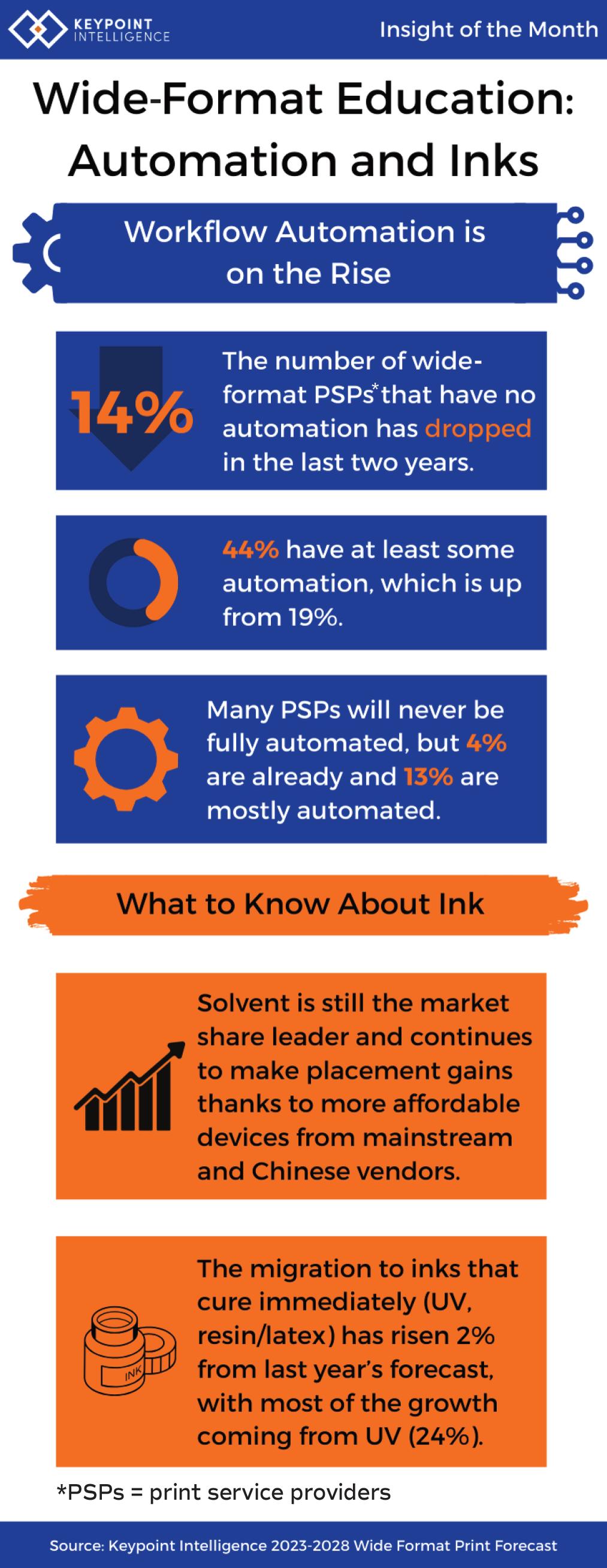

by: Dale Stein, Technology Assurance Group (TAG)
After analyzing more than $1 billion in office technology transactions, there are some trends that we feel morally obligated to point out. For example, nearly 10 years ago, we noticed that on-premise phone systems were starting to fade out, so we prepared dealers for the next wave. We warned: “If you don’t switch to VoIP or cloud phones, your competitors will switch and outpace you. You can either catch the wave and enjoy the ride of a lifetime — or be sucked into the undertow.”


Back then, we were early — and, as a result, the businesses that took action remained five to 10 years ahead of the curve. The early adopters profited and expanded market share. Meanwhile, the laggards worked harder than ever before and struggled when they had to start competing on price.
Today, the same situation is unfolding with servers. Most office technology dealers ignore this data because they have become reliant on server sales to help prop up their businesses. Their need to survive has effectively blinded them from seeing new opportunities.
Let us be absolutely clear: If you are still relying on server sales to help keep your business running, you are now at significant risk of being outcompeted. Why? Because you are in direct competition with an 800-pound gorilla: Microsoft.
To boil all this down into a single sentence, here is why now is the time to reexamine your business model: Microsoft Azure is not just a platform — it is an ecosystem. Azure technology is the future and it is time for office technology dealers to embrace it before it is too late.
Here is the good news. The truth is 90% of your competitors still have not adapted to Azure. And that is because it is new. They do not know how to price it, they lack a true understanding of how the underlying architecture actually delivers a lower true cost of ownership, and they are underestimating how dramatically it will impact the industry. Back when we predicted the decline of on-premise phones,
there was a combination of factors at play — technological innovation, maturity in the life cycle and profitability potential for business owners. That same mix is back.
So, why haven’t your competitors figured this out yet? Most of your competitors will dismiss Azure, yet, ironically, they are not certified Azure Solutions Architect Experts. That begs the question: How can you dismiss a solution that you do not understand yet?
If you are not ready to make the jump, at least consider buying Microsoft stock — the company is revolutionizing the tech space in ways you cannot afford to ignore.
Azure offers unparalleled benefits to your clients:
n Cost savings: Azure is more affordable for the end user and more profitable for the dealer.
n Scalability: You can easily scale up or down depending on demand, giving your clients needed flexibility.
n Energy efficiency: By moving to Azure, businesses can save a considerable amount via regional electricity arbitrage. For example, electricity costs are higher in Hawaii than they are in Louisiana, so what if all your servers ran in the latter location?
n Future innovation: Microsoft is at the forefront of tech advancements like quantum computing and artificial intelligence (AI). When you sell Azure, you are not just selling a product, you are selling an ecosystem of continuous innovation, which will keep your customer around for a long time.
Microsoft’s Azure platform is not just a cloud solution. It is an ecosystem that customers will never want to leave. Once they are in, the benefits are endless. They receive a constant stream of value-added services, which increases their productivity and boosts their profits while you gain a long-term opportunity that will grow recurring revenue streams to your business. How would your life be positively impacted if you reduced your dependence on large capital expenditure/project-based work over the next five years? What if every client





We make it easy for you to take the headache out of device fleet management for your clients with Toshiba's Managed Print as a Service (MPaaS). Toshiba enables you to rapidly optimize mixed vendor fleets for your clients. Learn more at business.toshiba.com
and every service you sold started to compound your profitability?
Here is why office technology dealers need to examine Azure:
n Control costs: Azure’s cost management features allow you to closely monitor and control your clients’ spending.
n Better performance: The platform optimizes efficiency, providing better results with fewer resources.
Azure is not just the future it is the present. The only question is whether you will be part of it. For office technology dealers, the time to act is now.
n Stronger security: Azure is backed by Microsoft’s $5-billion annual investment in cybersecurity and a team of 8,500 security professionals. Offering this level of security gives your clients peace of mind — something most competing MSPs/dealers cannot match.
One common objection we hear is that Azure is too expensive, but this misconception stems from IT companies that are not Azure certified. Since they lack a fundamental understanding of Azure’s pricing structures, they dismiss it because they want to keep selling what they already know. And even though server sales have been a strong profit center for many years, your clients do not want to keep purchasing them. All else equal, we estimate Azure costs to be roughly $165 per employee, which is nearly the same as traditional servers but with 30% better security, performance and scalability.
Another example of how Azure actually reduces the total cost of ownership is through proximal backup centers and leveraging various storage tiers (hot, cold or archive). These options allow for cost-effective, flexible data management that traditional on-premise servers cannot compete with.
If your competitors are trying to steer clients away from Azure, make sure they are dismissing sophisticated concepts like storage tiers, otherwise they have no grounds for dismissal. They are avoiding it because they have not figured it out. We are teaching hundreds of office technology dealers how to harness Azure to secure a lasting competitive advantage.
In reality, Azure’s total cost of ownership is far lower than traditional options, and the value it delivers — including improved cybersecurity, enhanced performance and scalability — is unmatched.
Office technology dealers who fail to adopt Azure are at risk of losing clients to those that do. Azure-certified MSPs are already four years ahead of the curve, and as they uncover new value-adds for clients, they will continue to pull away from the competition because every time they make a new sale, they will add more recurring revenue into their businesses.
In the near future, this will make them exponentially
harder to compete with because they will be compounding profitability, which will enable them to hire better staff members and invest in larger marketing/advertising campaigns to capture more market share.
Additionally, Azure eliminates the need to replace servers every four years, which means your business will cease to be reliant on convincing clients to make a major capital expenditure, which they do not want to make every few years. With Azure, the clients you onboard are highly likely to remain clients for life.
For dealers, Azure is not just a tech solution — it is a game changer that can breathe new life into your business. Here is why:
n Recurring revenue: Azure allows office technology dealers to build consistent, predictable revenue streams. Tired of always “putting out fires”? Do you want to see what you can accomplish when you spend the majority of your time working “on” your business versus “in” your business?
n Better client retention: Once clients move to Azure, they will never want to leave the Microsoft ecosystem. Azure continually evolves with AI, quantum computing and other cutting-edge technologies, keeping your clients futureproofed.
n Competitive edge: Most of your competitors do not understand Azure yet, which gives you a significant advantage. If you have ever wondered how some companies secure a top-10% position in a new market and can sit on that for decades, it is because they sought out new information and moved faster than 90% of their competitors.
You are in complete control of whether you harness this shift or are forced to adapt. Azure is not just the future — it is the present. The only question is whether you will be part of it. For office technology dealers, the time to act is now. Azure is transforming the landscape of IT, offering an ecosystem that is more secure, cost-effective and scalable than traditional servers. By moving to Azure, you are not just keeping up with your competitors, you are setting the pace. n
Dale Stein is co-founder of Technology Assurance Group (TAG), an organization of managed technology service providers (MTSPs). He is responsible for developing TAG’s strategic planning and guiding its business development.
In addition, Stein is the managing partner for TAG’s MTSP, i-NETT, and also serves as its president. He also founded Westec Security Corp. and served as its CEO. Stein can be reached at dales@tagnational.com. Visit www.tagnational.com







by: Jenna Miller, Emerald Strategic Marketing
It is three simple letters, but far from simple to execute: SEO, or search engine optimization. You have probably been told by more than one marketing manager, web designer or industry webinar that you should have a strong SEO strategy. Why is that? It is because the right strategy can increase eyes on your products and services, and increase conversions of prospects to customers. Who doesn’t want that?
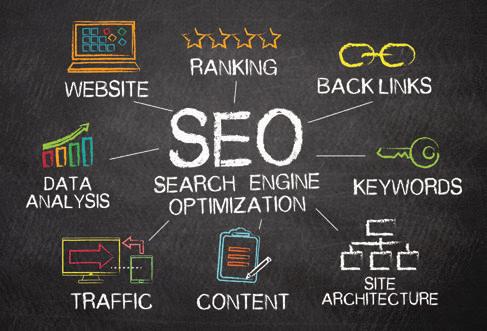
If you are unfamiliar with SEO, let’s catch you up before jumping into the finer details. SEO is the process of increasing website visibility and improving the quality and quantity of organic website traffic from search engines.
The benefits of a good SEO strategy are numerous. By optimizing your website, you significantly increase its visibility on search-engine results pages (SERPs), attracting more potential customers. Improved search rankings bolster your credibility and trustworthiness by giving the perception of authority and social proof to online searchers. Additionally, SEO is a cost-effective marketing strategy compared to traditional advertising methods, offering a substantial return on investment when done correctly. Plus, by outranking competitors in searches, you gain a competitive edge and establish your business as an industry leader, furthering your website’s and company’s credibility.
Now that you know the what and whys of SEO, let’s discuss common myths that are perpetuated by some not-so-reputable marketing agencies. One misconception is that implementing SEO strategies (as we will discuss in a moment) will give you overnight results. This is wrong. It typically takes four to 12 or more months before you start seeing results. Why? Search engines need to crawl and evaluate your site, and that takes time. But it is also because SEO is not a oneand-done task, which is another myth. It is a continual effort of adding, adjusting and evaluating many factors that will help build SEO strength. With each change, search engines will reevaluate and scan your website.
Another common myth is that by stuffing as many relevant keywords onto your site as possible, you will rank higher. Wrong again. This practice, aptly named “keyword stuffing,” hurts your ranking ability. Search engines are advanced these days and are looking for practices like this, penalizing sites accordingly. It is also incorrect to assume that adding keywords with the most overall web traffic will give you a better chance of ranking higher in searches. This is yet another myth. Choosing the right keywords is more than how much traffic they see each month. Considerations of their ranking difficulty, current trending pattern, search intent and even narrowing in on your specific location’s searches are all factors to consider when choosing the right keywords for your site.
A strong SEO strategy starts with understanding your website’s current analytics. Log your current organic search traffic, keyword rankings, click-through rates, bounce rates, average session durations, conversion rates, backlink profile, mobile performance, site speed and local SEO strength. Tools like Semrush help you see the entire picture and changes over time. After your initial evaluation, it is time to implement strategic tactics to improve your SEO. Start with in-depth keyword research. You need to understand what your target customer is searching for online and what keywords your competitors are organically ranking for. Using free and paid research tools, you will want to pick long-tail keyword phrases versus short-tail phrases to incorporate into your content. Longtail keywords are typically three or more words long, which often makes them less competitive to rank for in searches and have a higher conversion rate. For example, focusing on a keyword phrase like “cybersecurity for small businesses” is 35% easier to rank for than “cybersecurity,” which has a 100% difficulty rating. Plus, the intent of most people looking at the search term “cybersecurity for small business” is to investigate brands and companies (C), whereas those












searching “cybersecurity” are looking for information (I) on the topic (see the screenshot below).
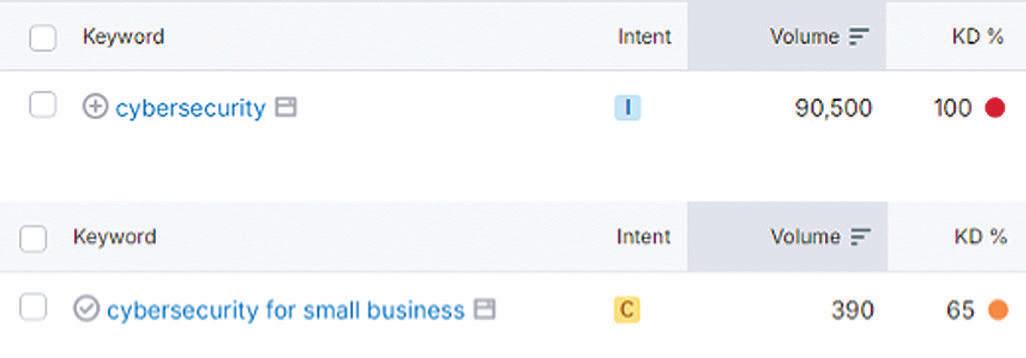
SEO is a process and a bit of an art form. It takes lots of analyzing, researching, planning and experimenting ... but I promise you, it is worth it.
Once you have a list of keyword phrases to focus on, you will want to produce high-quality content using them. Notice I did not say a high volume of content. It is always quality over quantity. Your content needs to be well-organized and easy to read. Structuring your content with proper HTML tags like <h1>, <h2> and <p> (these are “behind-the-scenes” indicators that help define the structure of your content) helps search engines read your site and determine the quality of your content.
Ensure that your content thoroughly covers the topic. While there is no set number of words per page that a search engine looks for, landing pages with 300 to 600 words, blog posts with 1,000 to 2,000 words, and evergreen content (content that remains relevant over a longer period of time) of 500 to 800 words are often ranked better, though it is a bit subjective.
Next, within your high-quality content, use optimized images to break up the text, where applicable. These are images that load quickly, add to the content and have alt text utilizing one keyword phrase you are writing about. See the screenshot below for an example of alt text.
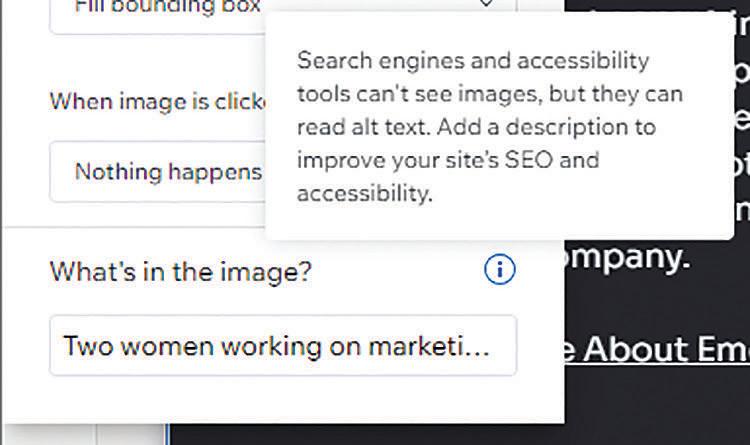
Additionally, be sure to link to other internal pages within your content, where appropriate. By linking quality content on one of your pages to another piece of good content elsewhere on your site, you are helping build credibility, which search engines love.
Another type of linking that is important to any good SEO strategy is backlinking. Backlinks are links from other websites to content on your website. In the past, people would create backlink groups. These groups’ sole purpose was to link to each other’s pages and get their links on as many sites as possible. But when you try to cheat the system, the system catches on. Search engines have updated policies to consider these practices a violation.
Keep in mind that not all backlinks are created equal. Links from high-authority websites always do more for you than those from low-quality sites. Think of it this way: If you are looking for recommendations for a new office chair, you are more likely to trust the suggestions of a well-known company that specializes only in office chairs versus an unknown shop that specializes in staplers. To accumulate more backlinks, you can reach out to reputable sites for opportunities to guest blog or share high-quality guides and tutorials that other sites would want to share.
So far, all these recommendations have focused mainly on on-page SEO. But I would be remiss not to mention that technical aspects of your site also affect your ranking. First and foremost, page loading speed is crucial. A page that can load within two seconds is ideal. Slow-loading pages often can have a higher bounce rate and can cost you a possible client. Websites like PageSpeed Insights (https://pagespeed. web.dev/) can do a quick test to see how your site loads on mobile and desktop. To increase loading speed, ensure your images are compressed, reduce the size of your HTML, CSS and JavaScript files, and store static resources locally on your content management system (CMS).
Another technical SEO consideration is your site’s mobile responsiveness. Google recently adopted a mobile-first indexing approach, meaning it primarily uses the mobile version of your site to index and rank pages. To improve your site’s responsiveness, you will want to ensure the overall site has a good user experience, regardless of the screen size it is viewed on. Elements you will want to include are large buttons that you can easily tap on smaller screens, readable text, easy navigation and quick loading speeds.
In the end, it is important to remember that there is no one quick fix to higher organic rankings on search engines. If anyone tries to sell you on that, run away. SEO is a process and a bit of an art form. It takes lots of analyzing, researching, planning and experimenting. In a world where everything seems to happen instantly, it can be difficult to trust a good SEO strategy’s long and tedious process, but I promise you, it is worth it. n
Jenna Miller is the CEO of Emerald Strategic Marketing, a digital marketing agency based in Naverre, Florida, that delivers custom solutions like SEO, social media management and other marketing services tailored to each client’s unique brand story. She can reached at info@emeraldstrategicmarketing.com. Visit www.emeraldstrategicmarketing.com.



Office technology dealers are creatures of habit and that is a good thing. Whether it is leveraging e-automate for service and contract management, deploying data collection agents (DCAs) to keep managed print services (MPS) engagements humming, or structuring deals with providers like GreatAmerica Financial Services to lock in long-term contracts, these are fundamentals that generate additional revenue streams and lock in customer relationships for years. But in 2024, there is another tool set that should be just as automatic: artificial intelligence (AI).
Just like you wouldn’t run an MPS program without data collection or send out lease agreements without solid financing, AI needs to be a core part of your business toolkit. And while you should always begin with a full assessment to determine your specific needs by department, let’s talk about the three foundational AI services — what I like to call the “AI trifecta” — that will make sure you are set up for a successful and safe start.
(1) Develop AI Policies and Guidelines — First things first: Before you even think about jumping headfirst into AI, you need some guardrails. Just like every good MPS contract includes terms to protect both you and the customer, you need AI policies to protect your data, intellectual property and operational integrity.
AI policies are not just about locking down data; they are about creating an environment where creativity can thrive without exposing your business to unnecessary risks. Based on the GoWest.ai AI standard operating procedure (SOP), here is what you should do:
n Assess your current usage: It is likely that someone (a whole bunch of “someones,” in fact) in your office is already using AI. Maybe a sales rep is generating email templates with ChatGPT or a marketing manager is using AI to brainstorm social media ideas. Start by understanding how and where AI is being used across your business.
n Set clear rules for data security: AI tools, particularly free ones like the public version of ChatGPT, store data in ways that may not be secure. Your policies should explicitly forbid entering sensitive client data or intellectual property into unapproved AI tools. Instead, mandate the use of secure, corporategrade tools like ChatGPT Team, which ensures data is not used for model training and adheres to SOC 2 compliance standards.
n Approved tools only: Corporate tools like ChatGPT Team offer critical security benefits. Unlike its consumer counterparts, these tools keep your data private and encrypted, preventing
by: West McDonald, GoWest.ai
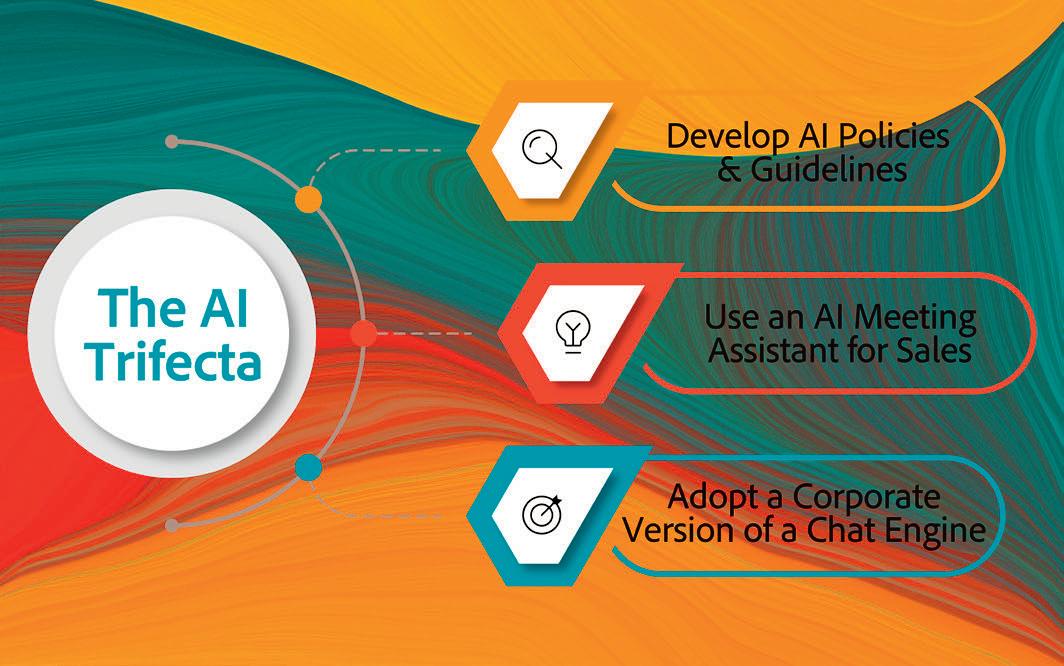
any exposure to third parties. Plus, you get admin controls to manage who has access and how the AI is being used. We will talk more about this later, but this is non-negotiable for secure business use.
n Ongoing training and monitoring: AI evolves quickly and your policies need to keep up. Make sure your team is not only trained on the initial rollout, but that there are regular reviews and updates to both the tools and the policies you are using.
Developing these guidelines does not have to be difficult and we have made it even easier. Reach out to me at west@gowest.ai and I will send you our complimentary AI SOP document, complete with customizable templates and best practices.
(2) Use an AI Meeting Assistant for Sales — Now, let’s focus on your sales team. If there is one universal truth in the office technology dealer channel, it is that sales reps are not known for their attention to detail when it comes to note taking or updating the CRM. And that is OK — salespeople excel at building relationships, not data entry. But you still need accurate records of those client conversations and that is where an AI meeting assistant comes in.
Take timeOS for example. It is an AI-powered meeting assistant that integrates directly with your CRM and task management platforms like Asana. Here is what makes it indispensable: n Automated summaries: Forget about scribbled notes or spotty CRM updates. TimeOS records and transcribes meetings, then summarizes the most important takeaways, ensuring that nothing slips through the cracks.
n Action item assignment: After each meeting, timeOS automatically assigns tasks and next steps, so your team does not have to manually update Asana or the CRM. This kind of
automation means fewer missed followups and more closed deals.
n CRM sync: TimeOS integrates with leading CRMs, so every client interaction is logged and trackable. This ensures no client interaction goes undocumented.
Other tools like Fireflies.ai and Otter.ai offer similar features, but timeOS’s seamless task management integration makes it a top pick for busy sales teams — a reason we use it at GoWest.ai. Automating these processes ensures that your sales team members can focus on what they do best — building relationships and closing deals — while the AI handles the administrative load.
You can position yourself as an AI advisor, helping clients implement the right tools and policies to navigate this new world safely.
(3) Adopt a Corporate Version of a Chat Engine (Like ChatGPT Team) — The third pillar of the AI trifecta is adopting a corporate-grade AI tool, like ChatGPT Team. Here is where many businesses slip up: they use free, consumer-grade AI tools that do not provide the necessary privacy, security or control. That is a big mistake, especially when tools like ChatGPT Team are available for just $25 per user per month (at the time of this writing).
Here is why ChatGPT Team is worth every penny:
n Data security and privacy: With ChatGPT Team, your data stays yours. It does not get used to train models, and it is encrypted both in transit and at rest, ensuring compliance with rigorous data security standards like SOC 2. GoWest.ai uses ChatGPT Team internally and recommends it to clients for precisely this reason — it offers peace of mind that the consumer versions simply cannot match.
n Admin controls and team management: One of the standout features of ChatGPT Team is the administrative dashboard, which allows you to manage who has access, what they can do and how AI is being used within your organization. This gives you full control, ensuring that no one is using AI in ways that could expose your company to risk.
n Collaborative GPTs: You can create custom GPTs tailored to specific workflows within your business. These are custom versions of ChatGPT designed for your team’s unique needs — whether that is streamlining project management, generating proposals or assisting with onboarding.
Using a corporate version is a small investment that pays off big in security and productivity. If you are serious about AI (and you should be), the cost is minimal compared to the potential risk of using free versions.
As an office technology dealer, you are already familiar with the value of conducting assessments — whether for fleet management or print usage. But here is a new twist: AI assessments. Just like your clients needed help managing their print
environments, they also need guidance on AI. Most businesses are in the same boat you were in a few months ago (or still are today) — unsure of what AI tools to use, how to protect their data and how to integrate these new technologies without creating more problems.
Offering AI assessments is a fantastic way to add monthly recurring revenue (MRR) and project-based income to your business. You can position yourself as an AI advisor, helping clients implement the right tools and policies to navigate this new world safely. Plus, the projects that come out of these assessments — whether it is helping them roll out secure versions of GPT or setting up AI-driven sales processes — create long-term value for both you and your clients.
We can help you develop your model in partnership with Keypoint Intelligence. If you are looking to sell your business soon or if you are more interested in maximizing value in your existing offerings by simply tightening your belt, maybe it is not for you. But if you are looking to grow your business, diversify and remain relevant beyond print services — or if you are going to pass the torch to the next generation and not just sell in the near future to a mega dealership — we should talk.
AI is not just the future — it is happening right now, and the businesses that adapt first will have a significant advantage. By focusing on these three foundational services — developing AI policies, using AI meeting assistants and adopting secure, business-grade AI tools — you will position yourself as a leader in the office technology space.
Do not let AI be an afterthought. Get proactive and start implementing these tools today. If you are looking for guidance, reach out to me at west@gowest.ai. We are offering a complimentary AI policies SOP, along with advice on how to get started. Let’s embrace this new era of AI together, ensuring your business — and your clients — are set up for success. n
As a leading authority in AI training and business solutions, West McDonald, founder of GoWest.ai, helps organizations navigate the uncertain world of generative AI, implementing game-changing internal and external AI solutions. Featured as an AI expert in top publications like The Imaging Channel and The Cannata Report, and having spoken at numerous events on AI and business use (Global Big Data Conference, FP Mailing National Kickoff, BTA events, Konica Minolta Top 25, Executive Connection Summit and the ANA Advertisers Association, to name a few), he is a thought leader in AI applications in various business channels. McDonald can be reached at west@gowest.ai. Visit www.gowest.ai.
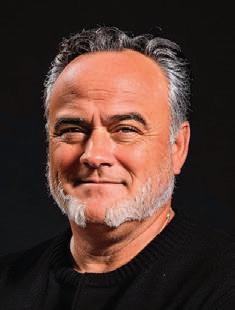

This month’s Legal Perspective takes a look at an ominous and increasing threat that hangs over every member of the dealer channel: data breaches. Generally speaking, a data breach consists of any security incident where an unauthorized party gains access to sensitive, confidential or proprietary information. Although the terms “data breach” and “cyberattack” are often used interchangeably, a cyberattack is only a data breach if it involves unauthorized access to data. For instance, a cyberattack that seeks to disable a website by hitting it with an overwhelming amount of traffic is not a data breach. A ransomware attack, on the other hand, where the attacker restricts access to data in exchange for a monetary payoff, is considered a data breach.

According to researchers at IBM, the global average cost of a data breach to an enterprise is $4.88 million. For data breaches in the United States, that average cost jumps to $9.36 million. In fact, some of the most notable data breaches in history have resulted from cyberattacks leveled against U.S. companies.
In perhaps the most famous example, from 2013 through 2016, a group of hackers based in Russia used a series of backdoors, stolen backups and access cookies to compromise 3 billion user accounts at Yahoo, gaining access to sensitive information including users’ names, email addresses, telephone numbers, birth dates, passwords and even answers to security questions. In the aftermath, Yahoo faced fines of tens of millions of dollars and 41 separate class-action lawsuits. In 2019, another group of hackers exploited an unprotected server at Facebook and posted the private personal profile information of 530 million users on a free online forum.
The cost of a data breach can actually be even greater in highly regulated industries such as health care, finance and public service. In those sectors, state and federal laws and regulations may include fines and penalties that accrue, in addition to the downstream costs of a data breach, such as lost business, decreased revenue and customer dissatisfaction. Earlier this month, a not-for-profit health insurance plan servicing the New York metro area learned this lesson the hard way, paying more than $1.2 million to settle claims brought by the U.S. Department of Health and Human Services (HHS).
The case, HHS v. Affinity Health Plan Inc., should serve as a cautionary tale to the dealer channel, particularly those offering multifunction equipment. The fact pattern, which came to light as part of an investigative report by the CBS Evening News, is all
by: Greg Goldberg, BTA General Counsel
too common. As part of its reporting, CBS purchased a copier/MFP that came off lease from Affinity. An examination found that the machine’s hard drive contained confidential health information belonging to nearly 350,000 individuals. CBS informed Affinity of the data breach and, in turn, Affinity self-reported to HHS. The HHS investigation revealed that Affinity had failed to erase sensitive data from multiple devices returned to leasing agents, thereby disclosing the protected health information of potentially millions of individuals without authorization. HHS found that Affinity had failed to consider information stored on hard drives as part of its required risk assessments and lacked adequate policies and procedures for managing data on leased equipment.
Had Affinity merely undertaken the same steps that most people walk through when trading in a used mobile phone (i.e., erasing the onboard memory and restoring it to factory settings), Affinity potentially could have avoided paying out a seven-figure settlement to HHS — to say nothing of the likely hundreds of thousands of dollars spent on attorneys’ fees. Dealers seeking to mitigate against the risk of landing in a situation like Affinity’s should consider taking a few actions. First, conduct a risk assessment to evaluate vulnerabilities, particularly for customers in highly regulated industries. Second, consider adding stronger indemnity language to service agreements that clearly outlines which parties are responsible in the event of a data breach. Third — and, really, this should be first — invest in a comprehensive cyberinsurance policy that covers both losses and defense costs.
The following resources may be helpful on your path toward achieving cybersecurity:
n FTC page on copier data security: https://www.ftc.gov/ business-guidance/resources/digital-copier-data-securityguide-businesses
n NIST’s draft publication regarding media sanitation guidance: https://csrc.nist.gov/files/pubs/sp/800/88/r1/final/ docs/sp800_88_r1_draft.pdf
n HHS’s Medscape resources from the Office of Civil Rights: https://www.medscape.org/ sites/advances/patients-rights n Greg Goldberg, partner at Barta | Goldberg, is general counsel for the Business Technology Association. He can be reached at ggoldberg@bartagoldberg.com or (847) 922-0945.



BTA would like to welcome the following new members to the association:
KC Digital Solutions, Fullerton, CA
Repro Products, Atlanta, GA
Simplified Office Systems, Columbia, SC
Consultant/Trainer Member
360Connect, Austin, TX
Vendor Members
FMD Distribution, Kearny, NJ
MyCloudIT, Dallas, TX
TTR Shipping, Stow, OH
For full contact information of these new members, visit www.bta.org.

Greg Goldberg is a savvy litigator with nearly two decades of experience. He provides members with no-fee advice and guidance on a diverse range of topics, including dealer/manufacturer disputes, dealer contracts, employment matters, industry documentation, legislative issues, sales tax matters, business valuation, and general industry and business issues as they affect dealers and resellers. Goldberg can evaluate legal needs, provide advice and guidance, review and analyze reseller contracts, and serve as a third party to help resolve business disputes. For more information, visit www.bta.org/Legal.
For information on BTA member benefits, visit www.bta.org/MemberBenefits.
For the benefit of its dealer members, each month BTA features two of its vendor members.

Conexlink, based in Dallas, Texas, is a software-as-a-service company and creator of the MyCloudIT platform. The company was started in 2012 to help IT professionals get to the Microsoft Azure cloud. Today, Conexlink is excited to help its clients optimize their cloud costs. The MyCloudIT platform automates the delivery, management and monitoring of desktops, apps and data in Microsoft Azure. Any managed service provider, software vendor or IT professional can migrate any workload over to the Microsoft Azure cloud today with MyCloudIT.
https://mycloudit.com

Whether you need to move copier/ MFPs or an entire office building, TTR Shipping’s team of whiteglove movers will make it seamless. TTR ensures the safety of your equipment throughout the length of the shipment by shrink-wrapping, padding and properly strapping all assets. The company is able to make this happen because of its team of coordinators, dispatchers and project managers, as well as its advanced order management software, OME. Additionally, TTR’s online quoting, order placement and tracking allow you to access everything you need at any time of the day.
https://ttrshipping.com
A full list of BTA vendor members can be found online at www.bta.org.
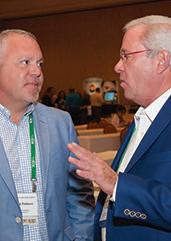
Compiled by: Brent Hoskins, Office Technology Magazine
Following is a question submitted by a dealer member as part of BTA’s Dealers Helping Dealers resource and many of the answers received. These answers and others can be found in the members-only section of the BTA website. Visit www.bta.org/DealersHelpingDealers. You will need your username and password to access this member resource.

Does your dealership encourage in-office, remote or hybrid work? Does this change based on title and/or responsibility?
“Yes, and it is based on responsibility. Some positions cannot be handled remotely.”
Keven Ellison, vice president of marketing AIS, North Las Vegas, Nevada
“My CFO is the only one I trust to work remote. She does that four out of five days a week. Everyone else needs to be in the field or the office by 8 a.m. or earlier.”
Tim Stanley, owner
TDSiT, Lowell, Arkansas
“No [remote or hybrid]. We encourage reps to visit accounts because we still believe that one-on-one meetings and personalization is more valuable then hiding behind emails and Zoom meetings.”
Van Seretis, president
Premium Digital Office Solutions, Parsippany, New Jersey
“Our decentralized structure has made a hybrid work environment a natural fit. We found it most productive to allow remote or hybrid work for team members who thrive working remotely. It has also enabled us to add and retain talented team members who live outside of our core area.”
Thomas Fimian, CEO Levifi, Charleston, South Carolina
“In-office is preferred. Only salaried employees can work from home, if needed.”
Dana Johnston, controller
CPI Technologies, Springfield, Missouri
“In-office work only. Sales and service go on-site to customer locations. We do have several sales agents who are not required to work in the office.”
Jeffrey Foley, COO
Apollo Office Systems, Alvin, Texas
“We are in-office and do not allow any hybrid or remote work. Obviously, technicians and sales reps are in the field, but they do come to the office as needed and for meetings. We are a service organization, and we strongly feel that our clients are best served by having a cohesive and collaborative group of people who can easily communicate in person to best meet the needs of our customers.”
Kecia Caughey, vice president of sales and general manager South Coast Copy Systems, San Diego, California
“Our dealership has found success with in-office work. We accommodate remote work on a case-by-case basis, but it is not a daily occurrence. Does the employee have a sick child at home? ‘Sure, work from home today.’ It is part of our culture to support home/life balance, but being in-office helps solve customer issues much more quickly.”
Ashley Whisonant, CFO
Capital Office Products Inc., Columbia, South Carolina
“We have remote work capability, but most choose to come to the office. They keep saying something about workplace culture. I guess they like it here.”
Michael DelBorrello, owner Cyan Sky Copier Technologies, Schnecksville, Pennsylvania
“We only encourage in-office work. Collaboration is critical for our company. Our team members work much better when they are face to face.”
David Carson, president Plus Inc., Greenville, South Carolina
“In-office, remote and hybrid depending on responsibilities.” Wilhelm Rebmann, CTO
Altek Business Systems, Telford, Pennsylvania n Brent Hoskins, executive director of the Business Technology Association, is editor of Office Technology magazine. He can be reached at brent@bta.org or (816) 303-4040.

by: Elizabeth Marvel, Office Technology
BTA member dealership Duplicating Products, based in Gainesville, Georgia, recently celebrated a significant milestone in its history — 50 years in the business. Founded in 1974 by Ralph Nix, the company has evolved its product and services offerings over the years but, today, continues to have a document-centric focus.
Ralph started in the office technology industry working for A.B. Dick Company in its warehouse. He eventually moved into a sales position where he excelled — even winning a national sales award. Ralph then went through the service side of the business, giving him a well-rounded education on A.B. Dick’s products. In 1974, Ralph moved his family (his wife, Marquita, their two boys and twin girls) from Atlanta, Georgia, to Gainesville, and started Duplicating Products as an A.B. Dick dealership. In 1978, as copiers were coming onto the scene, the company took on Savin and Saxon machines.
“At the time we took on copy machines, I was nine years old,” says Matt Nix, Ralph’s youngest son and current president of Duplicating Products, recalling his childhood in the business. “I had two-year-old twin sisters and an older brother who was 11. I can remember as kids, my siblings and I would be carrying paper around the warehouse, painting the walls, just doing whatever needed to be done.”
Tragedy hit the Nixes nine years after the company’s founding, changing the dynamic of the family and the business. “So my mom was, for the most part, a stay-at-home mom,” Matt says. “That is relevant because in 1983, my father died of a heart attack. My mother found herself with a whole family to take care of and a business that needed someone to run it. [Prior to Ralph’s death] she had answered phones and kept the books a little bit, but she was much more of a mom than she was a businessperson.
“But while my dad was a great salesperson, she turned out to be an incredible businessperson,” Matt continues. “Every big decision she made over the course of two decades she got right. She did a really great job and evolved from being a mom who got saddled with the business to an innovator and a business leader who built a great company.”
After going to college at the Georgia Institute of Technology in Atlanta, Matt worked in another industry for a couple of years before he began working full-time for his mom at Duplicating Products in 1988. “We worked together for more than 20 years,” Matt says, recalling the time he and his mom spent in the business together. “It was a great time. She was the boss and the business leader, and I was able to build a good, solid sales team.
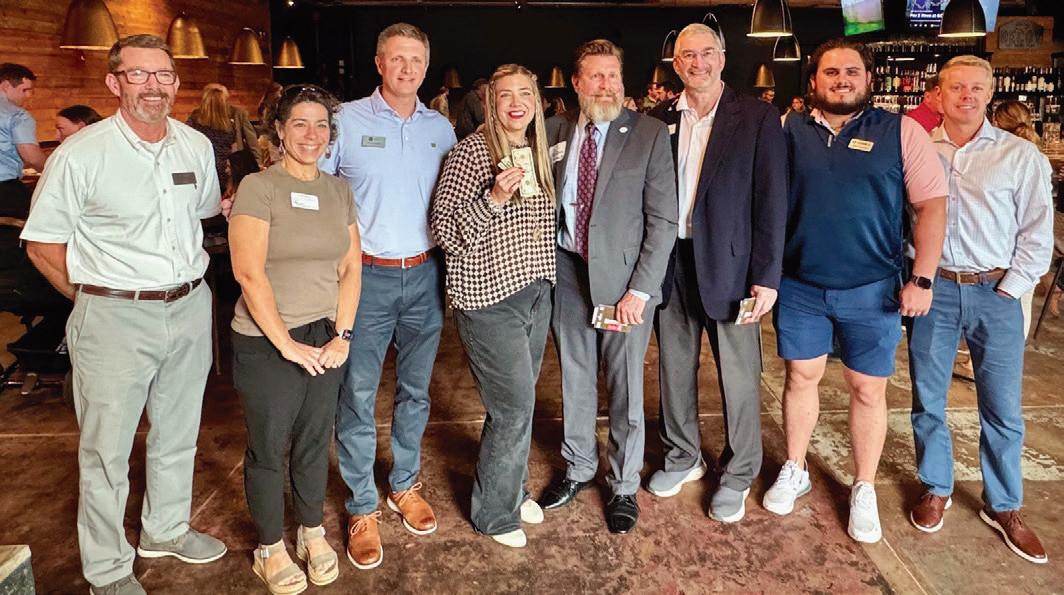

Matt
president,
from
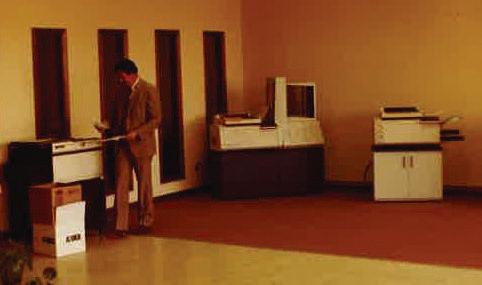

and Witt Nix (far right), director of business development, pose for a photo with prize drawing winners at Duplicating Products’ 50th anniversary celebration. Bottom photo: Founder Ralph Nix in the Duplicating Products’ showroom in 1982.
We had a partnership and it was a really great time to grow the business, work with my mom and have success together.”
Marquita ran the company until her retirement in 2010, when Matt took over the business. Prior to becoming president, he served in sales-centric positions in the company. “In 1990, we found ourselves with a sales force of just a couple of people,” Matt says. “So, for better or for worse, I started building our sales team. I hired a very young guy, Rodney Smith, straight out of college in 1990. We grew up driving each other to sell more and grow the business. And he’s still with me and is as good a sales rep as I could ever imagine having. He’s been a great contributor and is a valuable part of our team, our culture and our community. He has been doing it for 34 years and works harder and has more good ideas than I could ever come up with.”
Long-tenured employees like Smith are common at Duplicating Products, which gives you an idea of the company’s culture. “There are so many places people could leave and go, but as I mentioned, Rodney has been here 34 years and I’ve got technicians who’ve been here for 45, 40 and 35 years,” Matt says. “So I think we’re treating people well, and that works both ways — from a company standpoint and how we treat our team, but also from our team members’ standpoints and
how they treat our customers and our company as well.
“Years ago we adopted a slogan: ‘We’ll do what we say we’ll do,’” Matt continues. “I don’t get upset if our profit margins aren’t the best or if equipment needs to perform better. I get most concerned when I feel like we’re not delivering what we promised to deliver. I’m thankful I have almost no recollection of any customer ever saying, ‘You didn’t do what you said you were going to do.’”
“We focus more on being steady rather than being on the bleeding edge ... I’m going to try to add good people as opposed to chasing the latest shiny thing ... ”
Today, Duplicating Products has about 60 employees who work a territory of 22 counties in the northeast corner of Georgia. Headquartered in Gainesville, the company also has a second office in Suwanee, Georgia. “We have looked into geographic expansion, but this has been a great area for us,” Matt says. “I’ve always felt like we could grow as much within our territory as we could by getting outside of it.”
Duplicating Products is primarily a Ricoh and Canon dealership. “Our primary brands and products are Ricoh and Canon multifunction systems,” Matt says. “I say Ricoh because we’ve been a Savin dealership since 1978, and Savin became Ricoh. We’ve also been a Canon dealership since 1993. So we’ve had these two lines as good business partners for more than three decades.
“We’re still very document-centric,” he continues. “We do handle some of their peripheral products, whether they are scanners, white boards, plotters, etc., but our business is still very much built around the documents, the solutions and software that are tied to the multifunction devices we sell. So, we may have a solution that enhances the scanning capabilities of the MFP, or we may be using software that manages workflow or print volumes. The core of our business is still very much copiers, but we do look at and consider alternatives. For example, we took on mailing last year and we do handle HP products, and folding and finishing products from Formax.”
Matt goes on to explain the company’s document-centric focus. “What I have found historically over the years is that the multifunction systems are really what we do well, what my salespeople are comfortable with and where my service team seems comfortable,” he says. “There’s always enough opportunity to offer more products, but we can move the needle more individually and collectively by continuing to grow that copier, printer and related products business. I don’t want to be the old guy stuck in the old ways, but I don’t want to quit doing what we do so well. So, we’re trying to balance that.”
Jan. 1, 2024, was the company’s 50th anniversary, and it has been honoring that milestone via print and digital advertising throughout the year. The company also held an in-person celebration with the local chamber of commerce on Sept. 24, inviting employees and customers to thank them for their support during the last 50 years. “It was a great event and we had more
than 200 people in attendance,” Matt says. “Kit Dunlap, the executive director of the Greater Hall Chamber of Commerce, said it was the best after-hours event they’ve ever held.”
After 50 successful years in the business, why does Duplicating Products stand out from its competitors? “I think the keys for us are: We want to work hard, tell people the truth and give our customers a great experience through all the technology,” Matt says. “I think that’s one of the biggest things you have to recognize — the technology is going to continue to change. There are certainly some changes going on, but I think there’s also so much more we can deliver as solutions to our clients, whether it’s paper, electronic or whatever. The harder you work, the luckier you get. So, we continue to work hard and ride out the technology changes and try to look at other opportunities. But I think you don’t try to force that — you let it come to you so you find the right people and the right opportunities to fit your business.
“We focus more on being steady rather than being on the bleeding edge,” he continues. “I would rather be a second or third adopter, and I think from a business standpoint, that has enabled us to continue steady growth. I’m going to try to add good people as opposed to chasing the latest shiny thing, and stand behind our products and not get out there where we have to apologize for too much.”
Looking to the future, Matt sees the next generation as essential to Duplicating Products’ success. “I have a son, Witt, who has been back in the business for four years now,” he says. “He’s been on the same path that I was on, coming in in sales, learning the business and taking on some more leadership roles. But we’ve also brought in a good number of young people just this year. I’m excited about the opportunity for them to become great sales reps or marketing people. I think the transition to the next generation is really taking hold to where, in the next 10 years, those folks will become the people who understand the new technology and will lead us to more solutions or a new direction from a product standpoint.
“But I think with most new things that we have been successful with over the years, you need somebody to take it on as a champion, and I think by having these younger generations on board, we’ll grow because they’re going to be hungry,” he continues. “I will have much more faith and be willing to stand behind and help them with their ideas and ambitions than I will be in my ability to come up with what’s next and great. So, that’s exciting.” n Elizabeth Marvel is associate editor of Office Technology magazine. She can be reached at elizabeth@bta.org or (816) 303-4060.



2
• 2025 BTA National Conference (800) 843-5059 / www.bta.org/BTAEvents
31 • BPO Media
www.workflowotg.com / www.theimagingchannel.com
19 • BTA Service Academy (800) 843-5059 / www.bta.org/ServiceAcademy
30 • Business Equipment Quota Index (800) 843-5059 / www.bta.org/BEQI
7 • Distribution Management (800) 405-4745 / www.distributionmgmt.com
32
• DLL Financial Solutions
(610) 386-5629 / www.dllgroup.com
14 • DocuWare
https://start.docuware.com
21 • ENX Magazine
(818) 505-0022 / www.enxmag.com
5 • Epson
https://epson.com/business-inkjet-printers
21 • First Citizens Bank
https://firstcitizens.com/vendor-financing
13 • Frontier Imaging
(310) 898-2688 / www.frontierimaging.com
11 • Hytec www.hytecrepair.com
9 • Lexmark www.lexmark.com/9-Series
19 • Polek & Polek www.polek.com
3 • Sharp https://business.sharpusa.com
17 • Toshiba https://business.toshiba.com
31 • UPS
(800) 636-2377 / www.1800members.com/bta


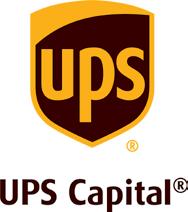

Shipping Services
Members have access to flat rate pricing with savings of 50% on Domestic Next Day/Deferred, 30% on Ground Commercial/Residential and up to 50% on additional services.
Shipping Insurance
One of the biggest frustrations with shipping is when a shipment gets damaged or doesn’t arrive at all. You have access to Flexible Parcel Insurance for your UPS® shipments. It’s real insurance and not standard carrier liability.
Freight Shipping
Let us do the heavy lifting. Save at least 75% on less-than-truckload (LTL) shipments with Member Freight.







